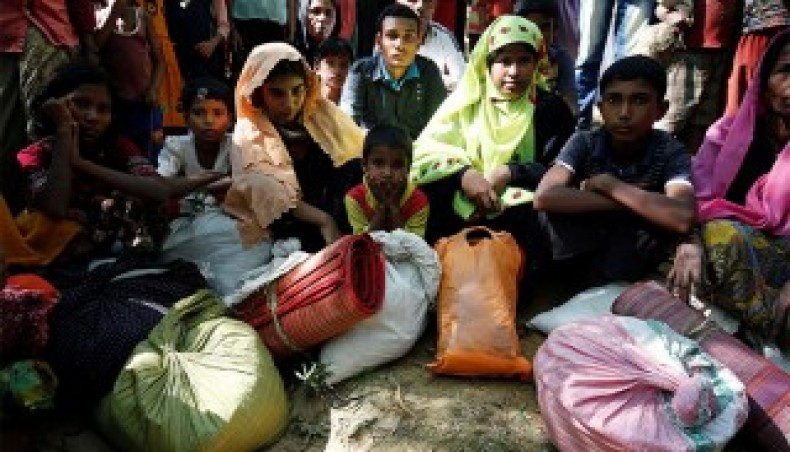Govt still in dark about number of undocumented Rohingyas
The government is still in the dark about the number of undocumented Rohingyas who have entered Bangladesh fleeing persecution of the ethnic minority group in Myanmar since 1978.
Census of the undocumented Myanmar nationals missed the first deadline in March 2016 while Rohingyas continued to enter Bangladesh.
The problem turned acute after the influx of Rohingyas in 1991-92, 2012 while according to Brussels-based International Crisis Group report published on December 15, about 27,000 Rohingya Muslims had entered Bangladesh fleeing fresh military crackdown on the religious minority community in Rakhine state in Myanmar since October 9.
Rohingyas, an ethnic Muslim minority group in Buddhist-majority Myanmar, are recognised by international rights groups as one of the most persecuted groups in the history having no citizenship in their homeland.
Currently, only 33,000 Rohingyas are registered in the two official refugee camps in Cox’s Bazar. The Planning Commission in its project proposal for the census said that 3-5 lakh unregistered Rohingya refugees were living in Bangladesh.
‘We have collected data in June and are processing the data aiming to submit the report by December,’ said Alamgir Hossen, project director of the census of the undocumented Myanmar nationals staying in Bangladesh.
The government in December 2014 asked the Bangladesh Bureau of Statistics for the census of undocumented Myanmar nationals in Bangladesh.
Subsequently, the Planning Commission approved the Tk 21.70 crore project in May 2015. The census was supposed to be complete by March 2016.
The government has a plan to create a database of the Rohingyas, following the census, along with their photos and addresses where they lived in Myanmar.
‘We could not end the census by March because of unavailable budgetary allocation,’ said Alamgir.
‘The government has conducted the census of irregular Myanmar nationals to know how many of them have actually been staying here, as well as to set the next course about them,’ said M Mustafizur Rahman, director general of the UN wing at the foreign ministry.
‘We are yet to get the report on the census.’
About 4,000 enumerators collected information going door to door simultaneously in six districts – Chittagong, Cox’s Bazar, Rangamati, Khagrachari, Bandarban and Patuakhali – where most Rohingyas were concentrated in June 2-14.
Top census officials said that in the census they were trying to know how many undocumented Myanmar citizens were living in the districts, how many had married Bangladeshi citizens, what were their current profession, who had helped them to enter Bangladesh, whether they had any official document as Myanmar people, how many of their family member were living in other part of Bangladesh even outside the country and others.
They said that during the enumerations, they found that majority of the undocumented Myanmar people were living in the reserved forests, khas lands, sea beach and personal lands and were mainly working as agriculture labour, fishing worker and rickshaw-pullers.
Many Myanmar people had official documents like census cards, identity cards of their school children, land ownership documents and ‘white cards’, a temporary identity certificate.
With physical features very similar to those of Bengalis, Rohingyas can mix well with the Bangladeshi community. Unless they disclose their identities, it is hard to distinguish them from Bengalis.
‘People who have lands in Myanmar want to go back to the country while the rest want to stay in Bangladesh,’ said a top census official.
Another official said that Rohingyas or undocumented Myanmar people had spread across the country and they were found in Dhaka, Gazipur, Narayanganj and other garment-prone areas and northern and southern parts of the country for working as agriculture labour while some others left Bangladesh to reach Malaysia, Thailand and other countries.
Those Rohingyas would remain out of the census, he added.
The project proposal of the census said that citizens of Myanmar left their country due to sectarian riot in Myanmar and socio-economic prospect of Bangladesh.
On an average, 8-10 Rohingyas enter Bangladesh every day and they
are destroying environment making house here and there and deteriorating law and order engaging in crimes, the project proposal said.
Undocumented Myanmar citizens are having negative influence on local labour market and coastal forestation, it added.
- See more at: http://www.newagebd.net/article/5172/govt-still-in-dark-about-number-of-undocumented-rohingyas#sthash.e2iC58ln.dpuf











